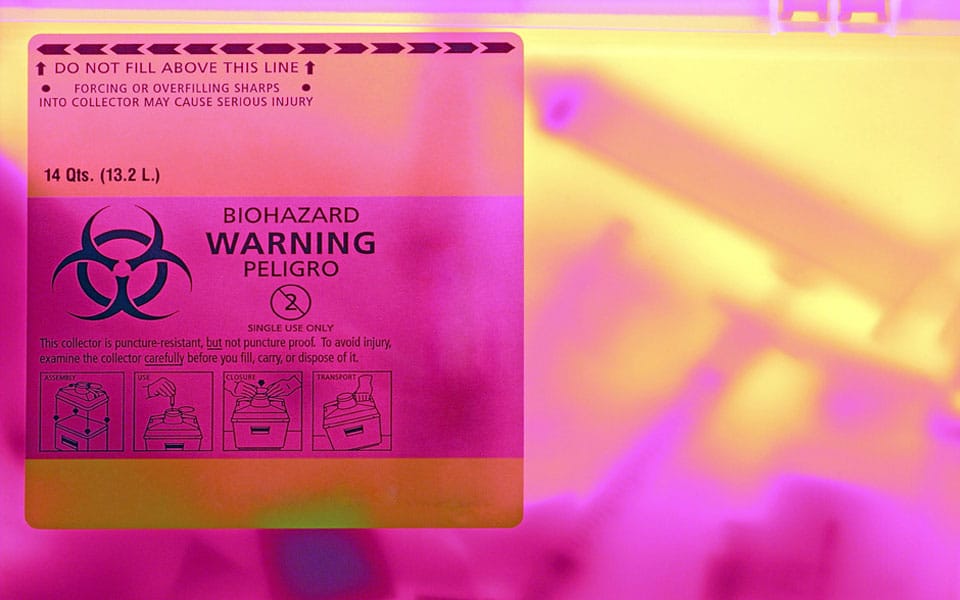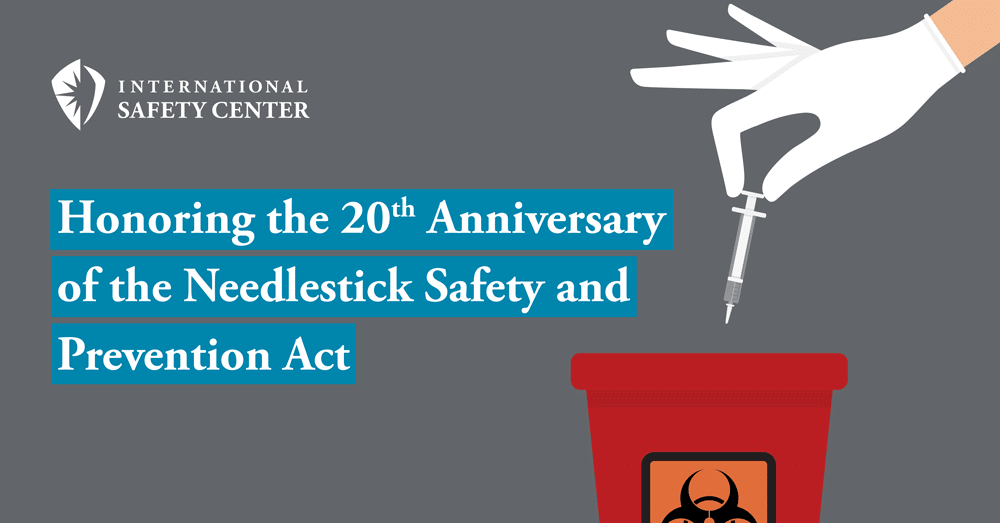
Resources & References
Committed to improving occupational safety in healthcare by minimizing exposure to blood and body fluids.
Consensus Statements and Calls to Action

Moving the Sharps Safety in Healthcare Agenda Forward in the United States: 2020 Consensus Statement and Call to Action. 20th Anniversary of the Needlestick Safety and Prevention Act.
Improving Work Wear for Workers at Risk of Exposure to Blood, Body Fluids, and Other Biologic Hazards: A Consensus Statement and Call to Action
Recent Publications
Sharps Inflicting Increased Wounds in the OR, OR Manager, August 2018
Splash Safety – Protecting Your Eyes (Part 1), American Nurse Today
Splash Safety – Protecting Your Eyes (Part 2), American Nurse Today
Changing Injury Trends Related to Diabetes and Insulin Injection (Part 1), American Nurse Today
Building Programs to Reduce Sharps Injuries from Insulin Injection (Part 2), American Nurse Today
Comparing Non-safety with Safety Device Sharps Injury Incidence Data from Two Different Occupational Surveillance Systems, Journal of Hospital Infection Read More
New measures for patient safety and worker safety, including blood/body fluid exposures and sharps injuries, The Leapfrog Group Read More
“Lessons Learned from EPINet” three-part series, American Nurse Today
Preventing Needlestick Injuries
Preventing Blood and Body Fluid Splashes and Splatters
Preventing Injuries from Disposable Syringes
Safety Center Presentations & Educational Material
At the Center, we are often asked to give podium presentations, posters, and educational sessions related to occupational safety and health in healthcare. These are some of the presentations that we have been honored to deliver. We simply ask that if you use them or any component of them that you reference the original presentation. Thank you. Happy teaching!
“Occupational Exposure to Hazardous Drugs”
Oncology Nursing Society. May 2016. San Antonio, TX. USP New Requirement 2018 Roll Out. “ Empowering Nurses. Improving Safety. Making the Case for Building Safe Systems to Reduce Exposures to Hazardous Drugs.” (Sponsored by B Braun)
“Impact of US Policy on Sharps Injuries, Blood and Body Fluid Exposures”
Instituto de Investigaciones Jurídicas de la Universidad Nacional Autónoma de México (UNAM). May 2016. Mexico City, Mexico. “The Impact of Regulations on Bloodborne and Biological Hazards in the USA: Progress & Lessons Learned”
Safer Medical Device Terms, Parameters & Product List
Our compiled “Summary of Safer Medical Device Terms and Defining Parameters” document is available to use for ease of referencing safer device terms from a variety of organizations.
This safety device product list has been compiled by the International Safety Injury Prevention Society (ISIPS) to help clinicians reduce sharps injuries and bloodborne pathogen exposures. It contains scores of safety product categories with a description of the category and a list of safety products that fit under that category. Are you aware of other safety products that should be included in this list? Please send an e-mail to info@isips.org.
Exposure Resource Links
The International Safety Center has curated links to federal agency, World Health Organization, university, and association resources on occupational exposure prevention and healthcare workplace safety.
These web-based resources may be useful to you and your institution if:
An employee has just experienced a sharps injury or blood exposure
CDC: emergency needlestick information
UC San Francisco National Clinicians’ Post-Exposure Prophylaxis Hotline
You are building a Bloodborne Pathogens Compliance Program
2001 Revised Bloodborne Pathogens Standard (Published 1/18/01)
Bloodborne Pathogens Fact Sheet
Bloodborne Pathogens Standard training material
Exposure Control Plan (model OSHA plan)
Frequently asked questions about the Needlestick Safety and Prevention Act Hospital eTool: OSHA requirements and recommended work practices for occupational health and safety in healthcare settings (by individual clinical settings)
Model Plans and Programs for the OSHA Bloodborne Pathogens Standard
How to Prevent Needlestick Injuries: Answers to Some Important Questions
Information for employers: complying with OSHA’s Bloodborne Pathogens Standard
Workbook for Designing, Implementing, and Evaluating a Sharps Injury Prevention Program (2008 revised version)
Universal Precautions for Prevention of Transmission of HIV and Other Bloodborne Infections
Hepatitis C – Information for healthcare professionals
CDC Guideline for infection control in health care personnel
You are evaluating new engineering controls (safety devices) or selecting personal protective equipment (PPE)
Safety and Health Information Bulletin: Use of Blunt-Tip Suture Needles (2007)
Eye Protection for Infection Control
Hand Hygiene Resource Page
Personal Protective Equipment (PPE) in Healthcare Settings (includes free downloadable slideset and posters)
Selecting, Evaluating, and Using Sharps Disposal Containers
WHO Toolkit – Protecting Healthcare Workers: Preventing Needlestick Injuries
TDICT Project (information and forms on device evaluation)
You are building, revising, or updating employee training materials
Exposure to Blood: What Health Care Workers Need to Know
NIOSH Workplace Safety & Health Topics
CDC Workplace Safety & Health Topics
University of Wisconsin – Madison: Bloodborne Pathogens Reference and Training Manual
You need information on emerging infectious disease threats
Guidance on PPE to be used by healthcare workers during management of patients with Ebola
World Health Organization (WHO) Protective measures for medical staff
Occupational Exposures to Blood and Body Fluids
This PDF features research from around the world published in national and international journals. It includes research conducted on needlesticks and sharps injuries, blood and body fluid exposures, and occupational exposures to bloodborne pathogens and infectious microorganisms.
There are currently more than 2,500 citations featured on this list and it is organized in chronological order by year. It will be updated annually.
If there are publications that you do not see on this list, please contact Dr. Amber Mitchell at amitchell@aoec.org.